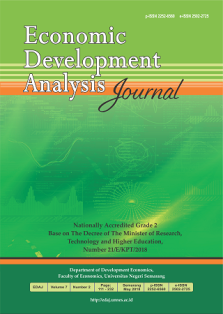Measuring Moral Hazard Behaviour and its Determinants Within Credit Installment
Abstract
Non performing loans (NPL) is an indicator of debtor’s inability in credit repayment which indicates the presence of asymmetric information that might cause moral hazard. This research aims to measure the level of moral hazard and its determinants of micro and small enterprises debtors of Bank Jateng which have NPL. The data were collected from 58 debtors who were selected using simple random sampling. Rating scale method was used to measure the level of moral hazard while regression was used to analyze variables determining moral hazard. The research found that (1) the level of debtor’s moral hazard tends to be medium-to-high, (2) bank monitoring, debtor’s age, and business size are significant variables determining moral hazard. Hence, the research suggests that (1) the bank needs to apply some specific treatments to debtors with high moral hazard, (2) bank monitoring needs to be increased thus debtors are not comfortable to carry out moral hazard, (3) young debtors tend to be more daring to do moral hazard hence it needs special attention and treatment to them, (4) the debtors with larger scale business have the potential to do moral hazard therefore treatment needs to be differentiated with the smaller ones.


